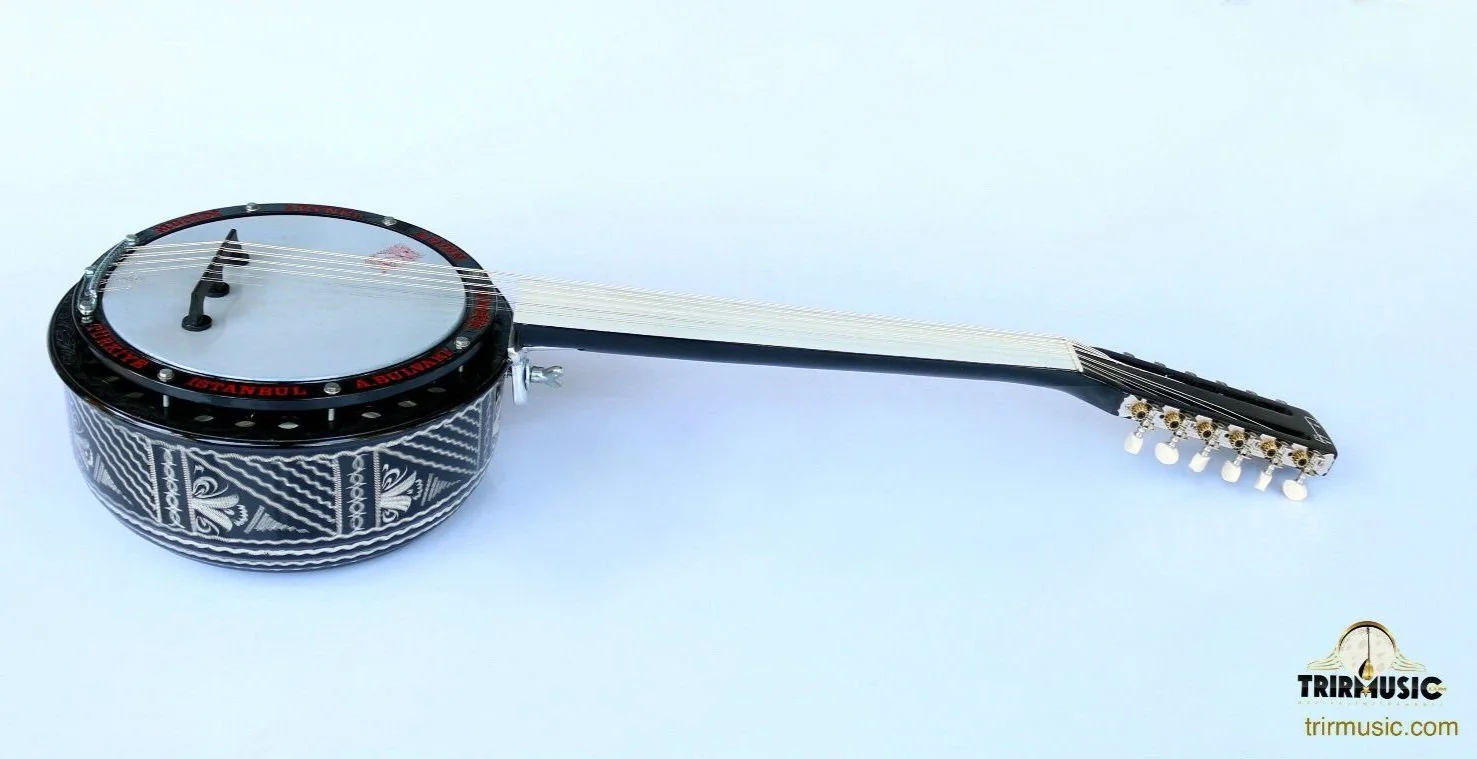A 20th-century hybrid of oud and banjo, this Turkish instrument, meaning fun or revelry, has a wooden bowl for resonance, giving it rounder, less tinny sound, comes in fretless and fretted forms, and was created by Zeynel Abidin Cümbüş, who unusually renamed himself after his instrument. He designed it to be inexpensive, accessible to many people, and as a symbol of peace. The standard model has 12 strings, tuned to AA2 BB2 EE3 AA3 DD4, and GG4, but can also be tuned like an oud.
Highly flexible, the neck is adjustable, allowing the musician to change the angle of the neck to its strings by turning a screw, as well as change the type of strings used. Other models, with various lengths, and with added frets on the neck, include the saz – tuned like the a bağlama, long neck, tie-on frets, three courses of strings, and 40 inches long overall; the 29-inch Cura, like the bağlama saz but higher pitched as a cura saz with three courses of strings; a 51-inch tambur version, and a bowed variant; a guitar version with six strings; a banco, smaller and tuned like a mandolin; and a ukelele version with four strings.
The cümbüş comes as many variants, including the longer saz version
Notable Turkish and traditional players include Gevende’s Okan Kaya, Selahattin Pınar active tanburist in the early 20th-century, Ercüment Batanay from the mid-20th century as well as ‘Kazancı’ Bedih Yoluk and son Naci Yoluk, Cahit Berkay, known for 1960s Anatolian rock, the folk-rock hybrid band Moğollar, Ara Dinkjian the Armenian-American fusion musician, and Harun Tekin who plays in the Turkish rock band Mor ve Ötesi.
Here’s an example from Cafer Nazlibas:
The instrument also appears in various numbers recorded by western musicians. These include Pink Floyd’s Dave Gilmour a the beginning of his solo piece Then I Close My Eyes, David Lindley plays a cümbüş with Ry Cooder in the soundtrack of Paris, Texas, Smokey Hormel plays a cümbüş on Tom Waits' Mule Variations, and also back in the1960s it also appears on The Hollies song Stop Stop Stop, showing its diversity from traditional to pop, rock, jazz and blues.
So then, any more songs and instruments featuring the cümbüş and variants? Feel free to suggest examples from any genre, or even in film, art, or other contexts in comments below.
You can also get in touch the contact page, and also visit us on social media: Song Bar Twitter, Song Bar Facebook. Song Bar YouTube. and Song Bar Instagram. Please subscribe, follow and share. New to comment? It is quick and easy. You just need to login to Disqus once. All is explained in About/FAQs ...
Song Bar is non-profit and is simply about sharing great music. We don’t do clickbait or advertisements. Please make any donation to help keep the Bar running:


